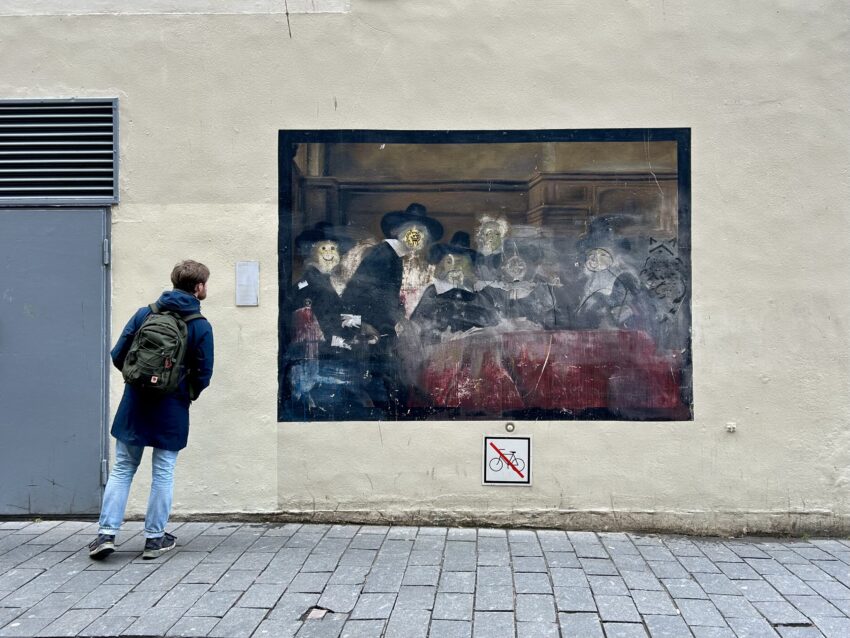Most Koentact students think of the field trip as the absolute highlight of their NT2 course.
But as a Level B2+ (Deli3) student, you may have already taken four to six previous courses,
thus exhausting the available field trips. Hence, my Deli3 group and I, their teacher, decide to create a DIY Field Trip. Student A suggests his own neighbourhood so that he can show us around and learn more
about it at the same time.
That’s how it’s decided on the Nieuwmarkt/Lastage/Chinese quarter, Amsterdam’s oldest
district with a vibrant history. We determine as many points of interest on that route as
there are participants. As a preparation, each will dive into the history of such a landmark to
give a talk on the spot. In Dutch, obviously.
Our first stop is the Waag building on the Nieuwmarkt. Student A tells us about its different
functions: from a fifteenth-century city gate to the seventeenth-century purpose to which
De Waag still owes its name – a “scale” for weighing goods coming off the merchant ships in
the nearby port.
Next stop: the Zeedijk, about which Student B informs us that its first function in the
sixteenth century was actually that of a dike to protect Amsterdam from the waters of the IJ.
You can still see the height difference with the rest of the area. Later it became the place
where sailors and prostitutes met and still later the first Chinese immigrants settled. Hence:
Chinatown.
On to the Oude Kerk, Amsterdam’s oldest church, which was built by Catholics, but became
Protestant after the Iconoclast – as student C knows to tell. Nowadays the Oude Kerk is also a
museum.
While the group looks inside, Student A stays outside with his dog, where he is soon joined
by the museum employee who is totally impressed by the fact that the group speaks Dutch
so well. When the rest of us return, he answers everyone’s questions, thus fulfilling the one
fixed Field Trip assignment: talk to a local. He tells us that the church was first called Sint
Nicolaas, after the patron of both sailors and sex workers. The latter being the current
correct name for ‘prostituees’, and to everyone’s relief much easier to pronounce.
Onwards via Warmoesstraat and the Dam to the oldest building of the University of
Amsterdam, the Agnietenkapel, about which Student D informs us that at the start in the
17th century there were only two professors, in the 19th century there were eight and today 1500.
After a visit to the old city hall (now Hotel The Grand), where I show the group the 1949
mural ‘Vragende kinderen’ by the Dutch painter Karel Appel, we arrive at the Lastage
neighbourhood. Student E shares that violent riots raged here in the 1970s to protest – in vain – the demolition of much of this and the Nieuwmarkt quarter for the building of
Amsterdam’s first metro line.
One of the housing blocks that was erected after the construction of the metro, is “the
Pentagon”, a typical eighties building by Dutch architects Theo Bosch and Aldo van Eyck,
about whom student F knows all.
The last stop of this DIY field trip is the friettent at the flea market on Waterlooplein for a
frietje pindasaus or mayo.
Marjan Ippel is NT2 teacher at Koentact and a writer. Interested in more of her stories?
Check her Substack page: https://alwaystalkinfood.substack.com.
